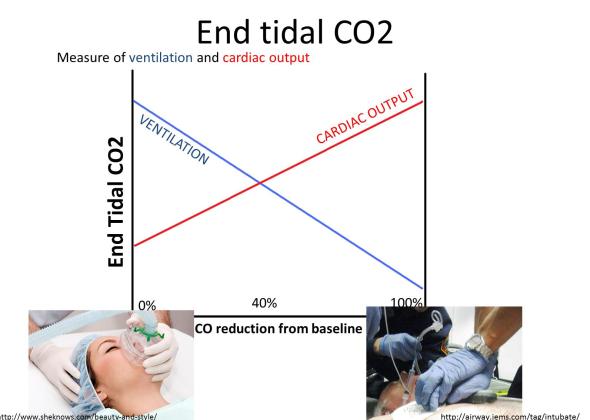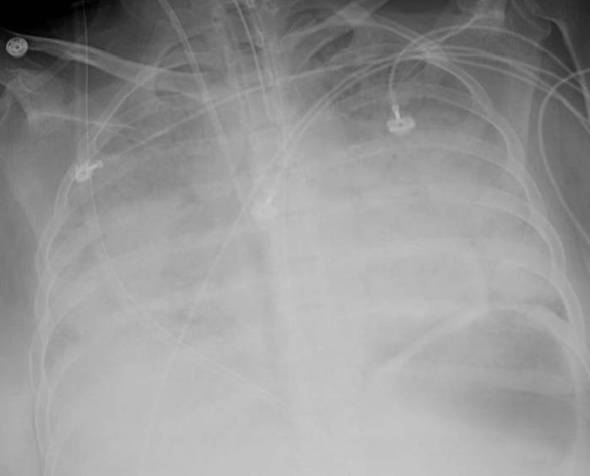Quick Pimps: GI Bleeding
Posted: October 29, 2013 Filed under: Critical Care, Gastrointestinal, Quick Pimps Leave a commentThis is a common topic to be pimped on in Emergency Medicine. This pathology is not uncommon, can manifest with varying signs and symptoms and is associated with a high mortality. This topic is extremely important to understand, not only because of its occurrence rate and related mortality, but because the actions taken immediately in the Emergency Department can have a significant impact on patient course and outcome.
This topic is full of clinical pearls, interesting pharmacology, practical decision tools and my favorite…pseudoaxioms!
Quick Pimps: Acute GI Bleeding PDF Preview
Disclaimer: this cartoon is meant to say NG tubes are safe. Their efficacy is up for debate.
Monitoring Critically Ill Patients
Posted: August 11, 2013 Filed under: Critical Care, Internal Medicine, Podcast 3 CommentsVital basics on vital signs and other signs that are vital.
Our goal in medicine is to gather and organize data, interpret that data and ultimately make decisions in the prevention, diagnosis, and management of disease. The initial part of this system is to ensure that adequate and correct data is collected and interpreted with knowledge of the process and shortcomings that the data was collected with.
Discussion includes vital signs, pulse oximetry, blood gases, capnography/end-tidal C02 (ETC02) and more. It is important to recognize where vital signs can trick you, how to deal with pulse oximetry latency and how blood gases and ETC02 can be interpreted in the setting of shock.
Monitoring Critically Ill Patients PDF
Acute respiratory distress syndrome (ARDS)
Posted: July 16, 2013 Filed under: Podcast, Pulmonology 1 CommentRob Kawa discusses Acute respiratory distress syndrome.
Mutiple Endocrine Neoplasias (MEN syndromes)
Posted: June 23, 2013 Filed under: Endocrine, Quick Pimps 4 Comments“Oh, this is definitely MEN syndrome….but which one?”
No matter how many times I have memorized these syndromes I feel like the information is gone after a week. I looked around for helpful study tips but since most use a combination of “this many Ps and that many Ms”…yet everything is a P or M, I was lost.
I made this diagram because I am a visual learner and it only seemed right to point out that there are only a few differences. I hope this helps for boards. This seems to show up on every USMLE and COMLEX.
Osteopathic Approach for Palliative and Hospice Care
Posted: June 11, 2013 Filed under: Osteopathic Medicine, Podcast Leave a commentRob Kawa talks palliative care in this podcast. This is a great talk going over lots of Osteopathic principles as well as techniques. This should also help those out there with a COMLEX exam coming up. Enjoy!
OMT In Hospice and Palliative Care PDF
Quick Pimps: Approach to Rheumatic Patient
Posted: June 8, 2013 Filed under: Quick Pimps, Rheumatology Leave a commentHere is a quick overview of many rheumatologic pathologies. My goal was to create a quick visual aid to assist in differential diagnosis and managing the dreaded rheumatology board question. I plan on editing and adding to the form so I welcome any comments.

Quick Pimps: Criteria and Rules Quick Reference Sheet
Posted: March 27, 2013 Filed under: Internal Medicine, Quick Pimps 2 CommentsI am working on a few podcasts but in the meantime I thought I’d share a new sheet that is helping me during my Internal Medicine rotation. It is a work in progress so let me know about any corrections or additions you can think of.
Thank for a great 2012!
Posted: January 2, 2013 Filed under: DidacticsOnline update Leave a commentHappy New Year!
DidacticsOnline is growing thanks to its great followers. Thank you for the comments and support! Please email with any comments or suggestions.
Stats from 2012:
4,329 films were submitted to the 2012 Cannes Film Festival. This blog had 18,000 views in 2012. If each view were a film, this blog would power 4 Film Festivals
The busiest day of the year was November 20th with 348 views.
How did they find you?
The top referring sites in 2012 were:
Some visitors came searching, mostly for didactics online, didacticsonline, didacticsonline.com, brandon masi parker, and prolotherapy.
Where did they come from?
77 countries in all! Most visitors came from The United States. The United Kingdom & Canada were not far behind.
Quick Pimps: Causes of Postoperative Fever
Posted: October 29, 2012 Filed under: Podcast, Quick Pimps, Surgery 2 CommentsPostoperative fever is an extremely common finding and therefore an extremely common topic for med students to be pimped on. Fever is found in as many as 91% of post-op patients. It is most often benign and self-limited and a normal physiologic response to the trauma of surgery. However it can be due to a variety of causes, some benign and some life threatening.
- Ws mnemonic
- POD 1-2: Wind– Pneumonia, Aspiration, PE (NOT ATELECTASIS…listen to podcast for more details)
- POD 3-5: Water– UTI
- POD ~5: Walking– DVT, PE
- POD ~7: Wound– Surgical Site Infection
- POD >7: What we did– Line infections of drug/blood product reactions at any time
- POD >10: Wonder Where?- Deep Abcess
Causes of Postoperative Fever Podcast
Evaluating postoperative fever: A focused approach. By James C. Pile MD
How to present a patient (Oral Case Presentations)
Posted: September 30, 2012 Filed under: Internal Medicine, Podcast Leave a commentOral case presentations (OCPs) are an integral part of the medical student learning experience and more importantly the team aspect of patient care. In this podcast I sit down with Dr. Natasha Bray DO, Director of Medical Education at Broward Health Medical Center, to discuss some tips for presenting a patient, the common mistakes made by students, and to hear an example from a master of the art of presenting.
How to Present a Patient Podcast
Approach to the Oral Presentation PDF
Article by Greeen et al on the SOAPS method for OCPs
Quick Pimps: Treatment of Hyperkalemia
Posted: August 20, 2012 Filed under: Quick Pimps 1 CommentQuick Pimps is a new series where I will quickly discuss topics that medical students are commonly “pimped” on. This first episode I will discuss the treatment of hyperkalemia. I will rapidly go through an overview of the treatment and then go more extensively in to details on the different treatment modalities.
Treatment of Hyperkalemia Podcast
Treatment of Hyperkalemia Powerpoint
The next step
Posted: June 29, 2012 Filed under: Osteopathic Medicine Leave a commentI would like to announce that Nicholas Camposeo, Randal Davis, Roberty Kawa, Tara Nowakhtar, Meighan O’Connor and Brandon Parker have completed our predoctoral fellowship in Osteopathic Practices and Principles. We will all be starting our 3rd year rotations in the next few days. DidacticsOnline’s format and schedule may change slightly in the upcoming months but will not stop posting didactic discussions. DidacticsOnline continues to strive to provide an Osteopathic voice in medical discussion. I hope to have regular posts on various topics throughout the year and continue to welcome any questions or comments on how to improve the content.
Please subscribe to our podcast and youtube channel and follow us on facebook and Google+.
Chronic Obstructive Pulmonary Disease (COPD)
Posted: June 29, 2012 Filed under: Podcast, Pulmonology Leave a commentTara Nowakhtar discusses COPD. Podcast includes pathophysiology, clinical presentation and management.
DidacticsOnline OPP COMLEX review with Dr. Boesler
Posted: June 7, 2012 Filed under: Osteopathic Medicine 4 CommentsJoin DidacticsOnline LIVE on Monday, June 11 at 7 PM for a fully interactive live review for the COMLEX. We will be answering questions on all OPP topics for the COMLEX with the help of Dr. Boesler.
To Join via Webcam: Follow DidacticsOnline on Google+ and send an email to didacticsonline@gmail.com prior to Monday night to let us know you want to join via webcam chat live OR,
To Watch Review Live: Go to YouTube.com/didacticsonline to watch the review live.
We encourage you to email didacticsonline@gmail.com with OPP questions prior to the review. Watch the review live to see your question answered. We will also be monitoring emailed questions throughout the review.
If you will be joining us via webcam make sure to sign on by 6:45 PM to make sure everything is working correctly. Also you can not join via iPad.
This review is not affiliated with Nova Southeastern University and the review does NOT represent the views or opinions of Nova Southeastern University.
Cranial Resources
Posted: May 24, 2012 Filed under: Osteopathy Leave a commentCranial osteopathy is often a difficult concept to grasp and comprehend the various motions. There are many questions on the COMLEX and various other exams concerning cranial motion and cranial strain patterns. We hope to shed some light on the concept here with these videos and diagrams.





